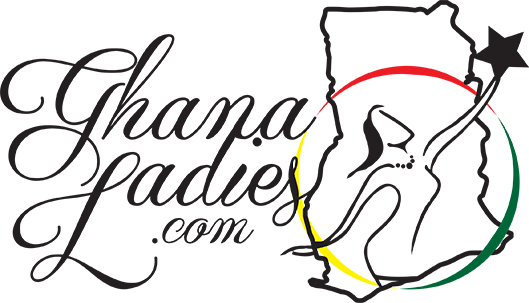Top 5 Foods That May Cause Or Lead To Stroke

Share
The fear of stroke — when a blood vessel in or leading to the
brain bursts or is blocked by a blood clot, starving brain cells
of oxygen and nutrients — is well founded. Stroke is the
number-three killer in the world, affecting more than
700,000 people each year.
Here are just some of the foods that may cause the type of damage that can lead to a stroke
1.Red Meat
The journal Stroke recently published a study showing that consuming a large portion of red meat each day led to a 42-percent higher incidence of stroke. You may already know that eating food high in saturated fat isn’t good for you, but you probably didn’t know that it increased your stroke chances by nearly 50%.
Why: Researchers have long known that the saturated fat clogs arteries with a buildup of protein plaques. But in addition, hemoglobin, the ingredient that gives red meat its high iron content, may pose a specific danger when it comes to stroke. Researchers are investigating whether blood becomes thicker and more viscous as a result of the consumption of so-called heme iron, specifically upping the chance of strokes.
Eat right: Aim to substitute more poultry (particularly white meat) and fish, which are low in heme iron, for red meat. Also, choose the heart-healthiest sources of protein whenever you can, particularly beans, legumes, nuts, tofu, and nonfat dairy.
2.Prepared/Canned Foods
Whether it’s canned soup, canned spaghetti, or healthy-sounding frozen dinners, prepared foods rely on sodium to increase flavor and make food taste fresher. Canned soup is cited by nutritionists as the worst offender; one can of canned chicken noodle soup contains more than 1,100 mg of sodium.
Why: Salt, or sodium, as it’s called on food labels, directly affects stroke risk. Studies show that sodium raises blood pressure, the primary causative factor for stroke. In one recent study, people who consumed more than 4,000 mg of sodium daily had more than double the risk of stroke compared to those who ate 2,000 mg or less.
Some common, safe-sounding ingredients that really mean salt:
• Baking soda
• Baking powder
• MSG (monosodium glutamate)
• Disodium phosphate
• Sodium alginate
Eat right: Make your own homemade soups and entrees, then freeze individual serving-sized portions. Buy low-sodium varieties, but read labels carefully, since not all products marked “low sodium” actually are.
3.Diet Soda
Although replacing sugary drinks with diet soda seems like a smart solution for keeping weigh down, diet soda is likely a major stroke culprit.
Why: People who drink a diet soda a day may up their stroke risk by 48 percent. A Columbia University study presented at the American Stroke Association’s 2011 International Stroke Conference followed 2,500 people ages 40 and older and found that daily diet soda drinkers had 60 percent more strokes, heart attacks, and coronary artery disease than those who didn’t drink diet soda. Researchers don’t know exactly how diet soda ups stroke risk — and are following up with further studies — but nutritionists are cautioning anyone concerned about stroke to cut out diet soda.
Eat right: Substitute more water for soda in your daily diet. In addition to drinking more water, if your taste buds demand something with more flavor, try adding slices of fruit to your water, or drink controlled sugar lemonade or iced tea.
4.Baked goods
Muffins, doughnuts, chips, crackers, and many other baked goods are high in trans fats, which are hydrogenated oils popular with commercial bakeries because they stay solid at room temperature, so the products don’t require refrigeration. Also listed on labels as “partially hydrogenated” or hydrogenated oils, trans fats are found in all kinds of snack foods, frozen foods, and baked goods, including salad dressings, microwave popcorn, frozen French fries, cake mixes, and whipped toppings.
Why: For years scientists have known trans fats are dangerous artery-blockers, upping the concentrations of lipids and bad cholesterol in the blood and lowering good cholesterol. Researchers at the University of North Carolina found that people who ate 7 grams of trans fat each day — about the amount in two doughnuts or half a serving of French fries — had 30 percent more strokes (the ischemic type, caused by blocked blood flow to the brain) than women who ate just 1 gram a day.
Eat right: Aim to limit trans fats to no more than 1 or 2 grams a day — and preferably none. Avoid fast-food French fries and other fried menu items and study packaged food labels closely. Even better, bake your own cookies, cakes, and other snacks.
5.Processed Meat
Pastrami, sausage, hot dogs, bacon, or a smoked turkey sandwich…doesn’t matter. They can all increase stroke danger.
Why: Smoked and processed meats hurt you in two ways: Sodium and preservatives. Sodium nitrate and nitrite have been shown by researchers to directly damage blood vessels, causing arteries to harden and narrow. And of course damaged, overly narrow blood vessels are exactly what you don’t want.
Many studies have linked processed meats to coronary artery disease (CAD). The journal Circulation calculated a 42-percent increase in coronary heart disease for those who eat one serving of processed meat a day. Stroke is not the only concern for processed meat fans; cancer journals have reported that consumption of cured and smoked meats is linked to an increased risk of diabetes and cancer.
Eat right: If a smoked turkey or ham sandwich is your lunch of choice, try to vary your diet, switching to tuna, peanut butter, or other choices several days a week. Or cook turkey and chicken yourself and slice it thin for sandwiches.
source:omgghana.com
Share










